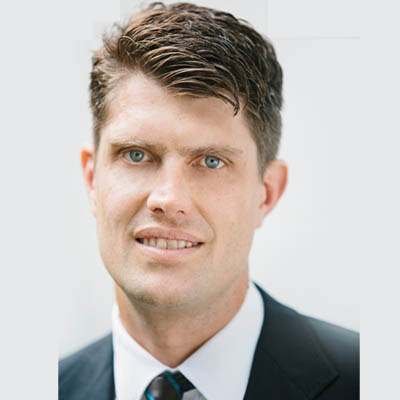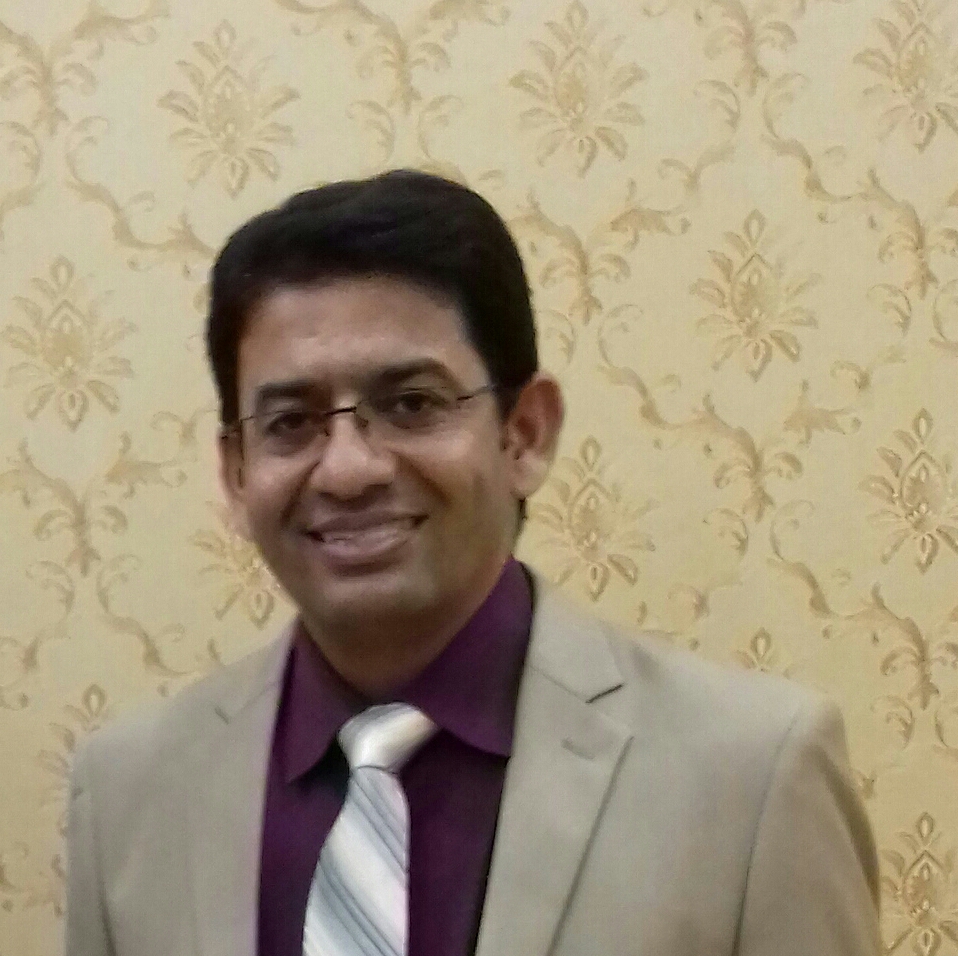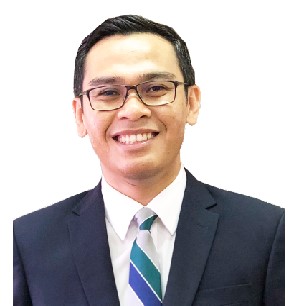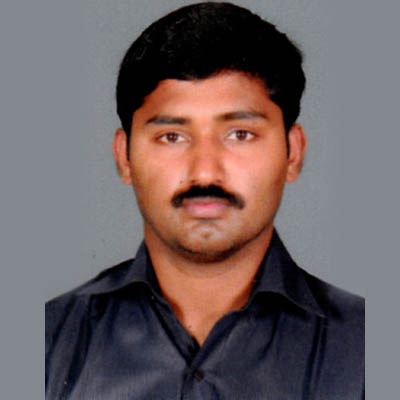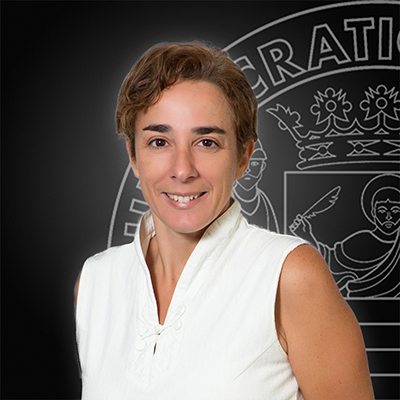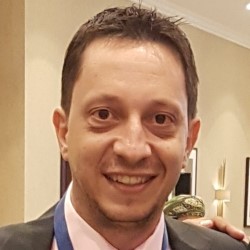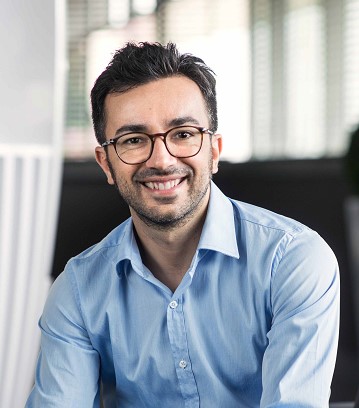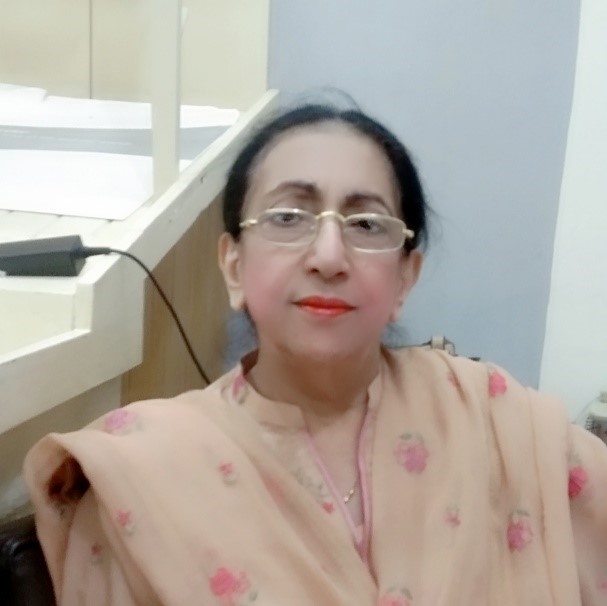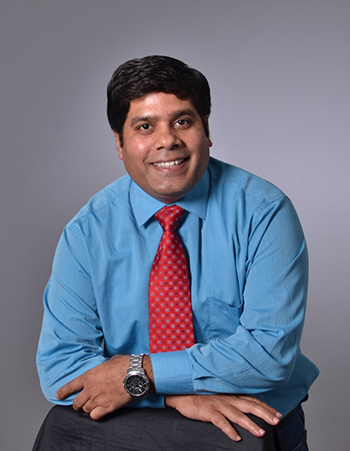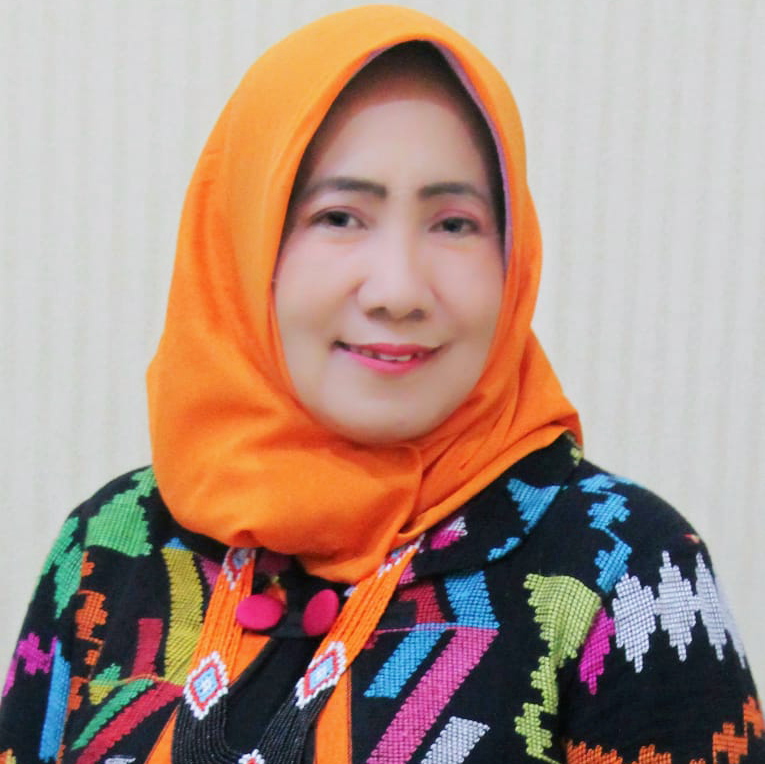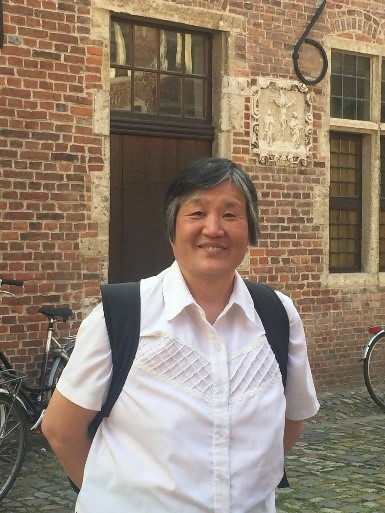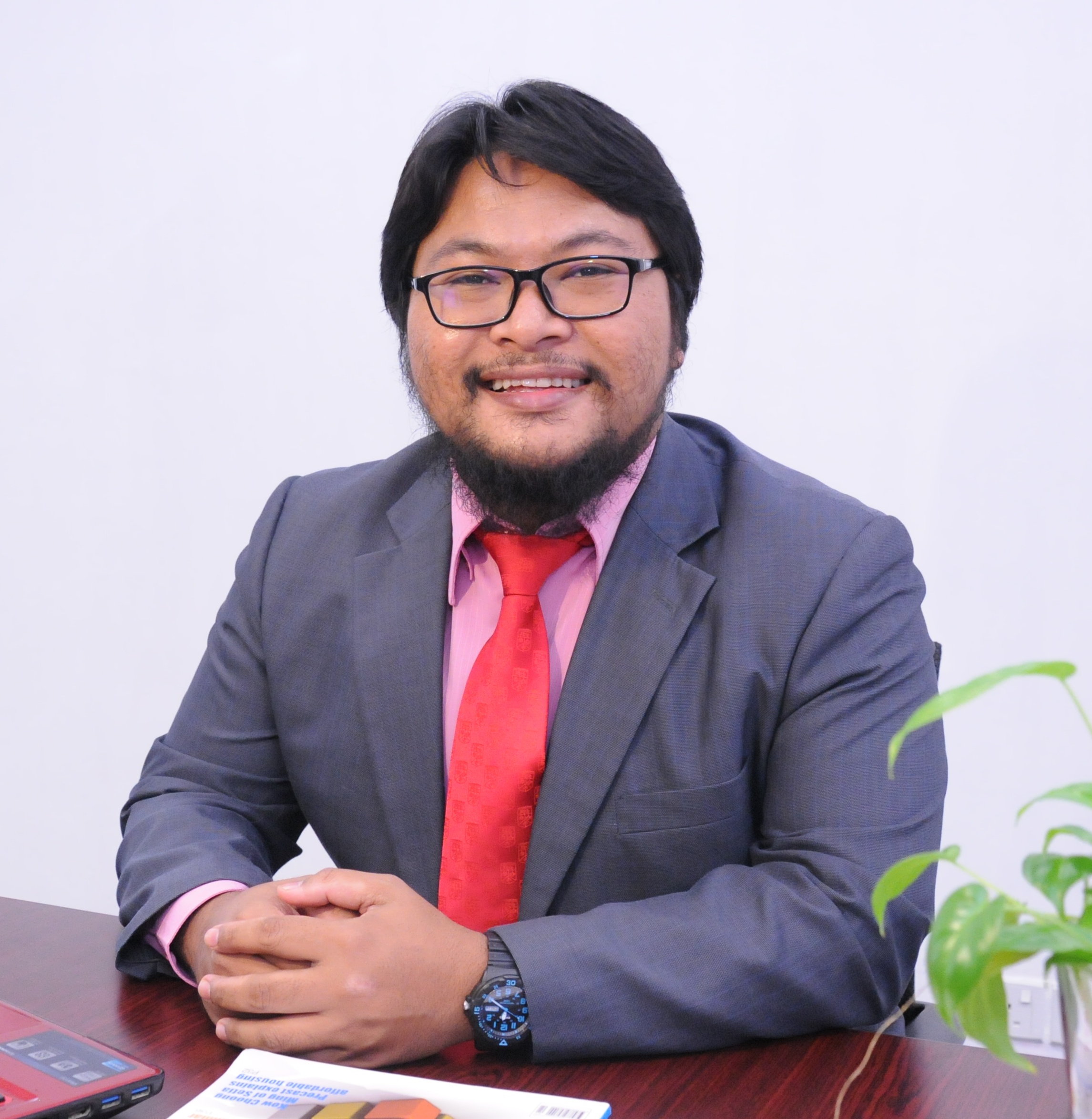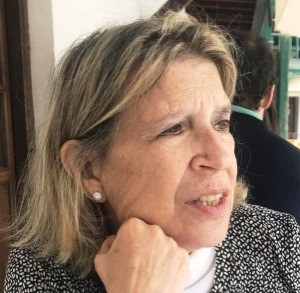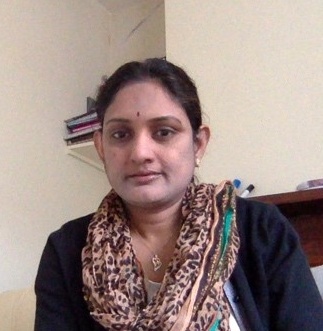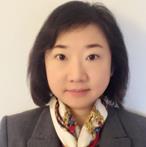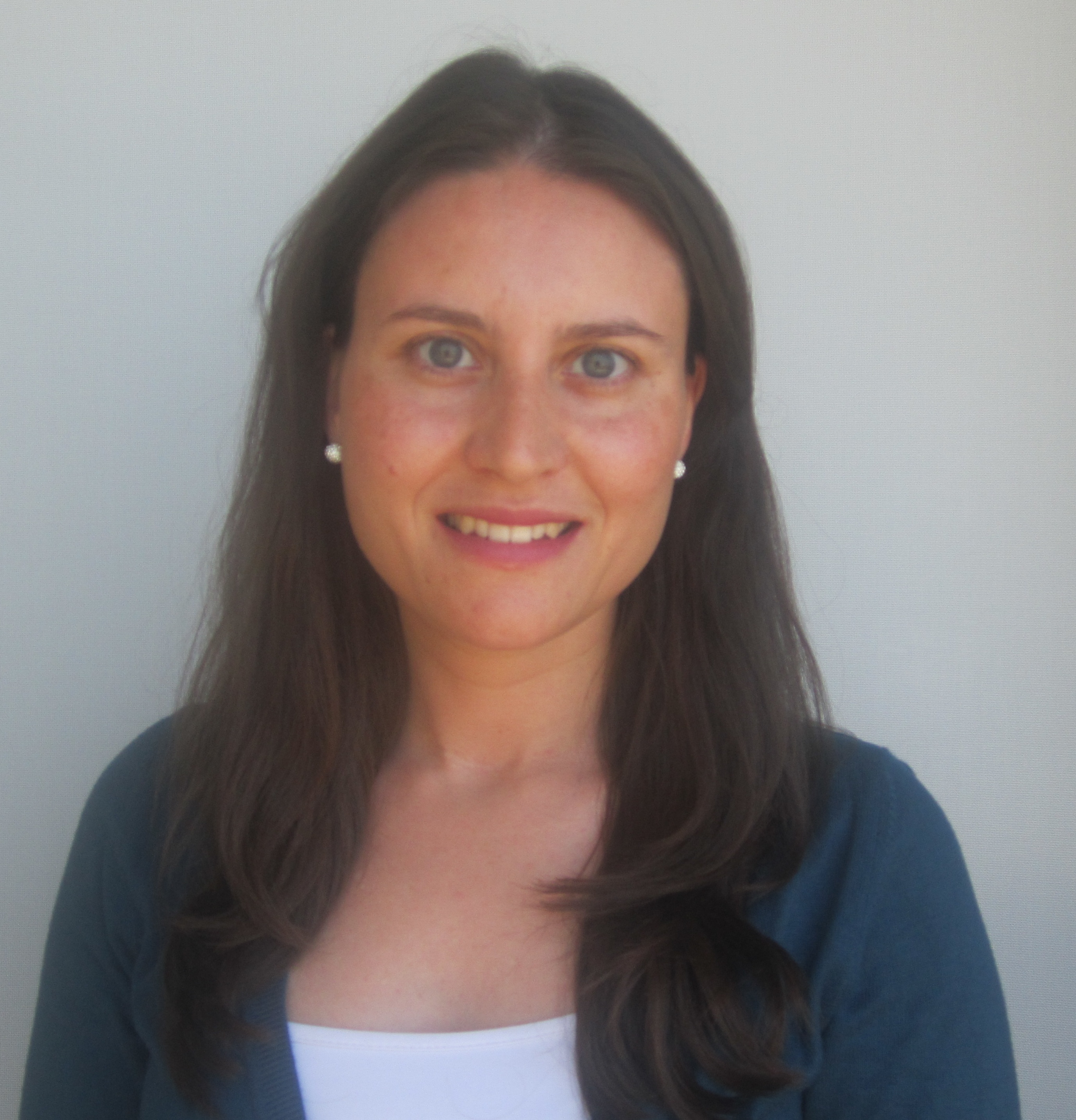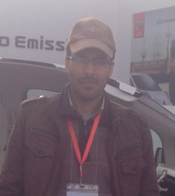Invited Speakers
Prof. Petros Samaras
Director, Laboratory of Technologies for Environmental Protection and Utilization of Food ByproductsDepartment of Food Science and Technology
International Hellenic University
Greece
Speech Title: Membrane fouling in bioreactors and operation controls for efficient reduction
Abstract: Membrane bioreactors (MBRs) have been widely used during last decades for wastewater treatment worldwide in large-scale plants, due to their various advantages, such as excellent effluent quality, occupation of small land area, low hydraulic retention time (HRT), higher solids retention time (SRT) and lower sludge production. However, they present a major disadvantage that resides in energy consumption, which is attributed to membrane fouling problem. Membrane fouling is caused by the accumulation and deposition of activated sludge substances on the surface and in the pores of the membrane. Membrane fouling leads to increase in trans-membrane pressure (TMP) by reducing the membrane permeability. Extensive studies have been performed aiming to search and explain the membrane fouling mechanism, as well as to confront it. According to such research works, irreversible membrane fouling has been attributed to the gradual deposition and aggregation of SMP within the membrane pores resulting in pore blockage and increased TMP. The irreversible membrane foulingin most cases has been semi-confronted with chemical cleaning of the membrane, usually in a special facility outside the MBR system, which implies considerable labor costs. In this research work an innovative method was investigated in pilot-real scale MBR, whereindigenous filamentous microorganisms of the bioreactor were used. The MBR unit consisted of a denitrification tank of dissolved oxygen DO = 0.2±0.05 mg/L, an aerated/filamentous’ growth tank of DO =0.5±0.3 mg/L and an aerated tank of DO= 2.5±0.5 mg/L. The controlled growth of filaments was achieved in this MBR unit, favouring the creation of sludge with high porosity, contributing to reduction of membrane fouling.
Keywords: Membrane Fouling; Membrane Bioreactor; Dissolved Oxygen; Trans-Membrane Pressure
Assoc. Prof. Philipp R. Thies
College of Engineering, Mathematics and Physical Sciences (CEMPS), University of Exeter, United KingdomCo-Director of Research (Renewable Energy)
Co-Director EPSRC Supergen ORE Hub
Speech Title: Nonlinear mooring systems for Floating Offshore Wind Turbines
Abstract: Mooring system performance directly affects efficiency and safety of operation process of floating offshore wind (FOW) concepts. Unlike traditional Oil & Gas platforms or vessels, FOW concepts require mooring solutions, which work with very high background thrust loads from the turbines. Mooring of such floating platforms in shallow water is a particularly challenging effort calling for new solutions. The combination of this requirement, with the different performance requirements for FOW concepts (spar, TLP, semi-sub), and the low target cost per MWh required for competitive energy, makes existing mooring systems a key limiting factor in the deployment of a future large scale FOW industry.
The mooring industry is very conservative and takes a long time to adopt new technologies. This is a challenge for the FOW market where innovations are required to solve immediate problems The use of active/passive shock-absorber components in moorings to improve position keeping of FOW platforms holds considerable potential to reduce mooring loads and cost.
The presentation will provide details of the development, testing and demonstration of innovative spring mooring components, designed to passively manage the dynamic loads through stretching, reducing the peak and cyclic loads, thus reducing the design requirements on anchors and cables.
Assoc. Prof. Muhammad Sajid Hamid Akash
ChairmanDepartment of Pharmaceutical Chemistry
Government College University
Faisalabad, Pakistan
Speech Title: Environmental contaminants-induced metabolic disorders and their treatment strategies using plant-based bioactive compounds
Abstract: Exposure of environmental contaminants (ECs) have an important role in pathogenesis of various metabolic disorders notably diabetes mellitus, insulin resistance, impaired glucose tolerance, impaired insulin secretion and many others. We have investigated in cross-sectional studies that Pakistani population is generally exposed to various ECs notably, bisphenol A (BPA), heavy metals (arsenic, cadmium). Further, the exposure of these ECs is strongly associated with augmented levels of various inflammatory response and imbalance in oxidative status of the human body. We have also found that exposure of ECs impairs the insulin stimulating hormone and carbohydrate metabolizing enzymes that may lead towards the onset of impaired carbohydrate metabolism and impaired insulin secretion from β-cells of pancreatic islets. To investigate the therapeutic role of plant-based bioactive compounds, we performed in vivo studies by inducing the exposure of ECs in experimental animals. We observed that exposure of ECs considerably altered normal homeostasis of various hormones and enzymes that were in accordance with key findings of our cross-sections studies that showed an association between chronic exposure of ECs with risk factors of metabolic disorders. Furthermore, plant-based bioactive compounds have significant potential to turn down the process of inflammation and oxidative stress in ECs-induced experimental. Hence, from experimental results we found that plant-based bioactive compounds significantly ameliorate the generation of oxidative stress via reducing the inflammatory response and lipid per-oxidation in ECs-induced diabetogenic rats. Plant-based bioactive compounds also exhibit anti-inflammatory activity through reducing the augmented levels of pro-inflammatory cytokines and by elevating the expression of serum and tissue level of GLUT and GLUT4. We conclude based on our cross-sectional and experimental studies that environmental pollution is one of the major health concern and utmost importance should be given to find out and explore the therapeutic interventions to treat ECs-induced metabolic disorders.
Keywords: Endocrine disrupting chemicals, Bisphenol A, Metabolic disorders, Risk factors.
Prof. Ahmad Zaharin Aris
Department of Environment and Institute of Advance TechnologyUniversiti Putra Malaysia
Selangor, Malaysia
Speech Title: Environmental pollution, daily exposure, and potential risk of endocrine disrupting compounds
Abstract: The worldwide extensive urbanization in terms of economy, industrial, and population have caused deterioration of environmental quality. Further, the issue concerns not only the environmental contamination level and ecological risks associated, but also human exposure via daily dietary intake. Prevalent contamination and potential risk of exposure of emerging contaminants i.e., endocrine disrupting compounds (EDCs) were observed in food and drinking water supply. This indicates inadequacy of the current treatment technologies and regulatory exercises in addressing the whole spectrum of water pollution and pollutants evolution, which requires effective risk communication and governance since the impacts might have been underestimated due to the relatively low knowledge and awareness. The emerging quality issues of food and water supply require development of strategies with application of methods and technologies to reduce the effects of pollution in the environment, particularly those having direct contact with humans such as food and water.
Keywords: Endocrine disrupting compounds (EDCs); Emerging contaminants; Surface water; Drinking water; Wastewater; Holistic approach
Prof. Maria WACŁAWEK
Institute of Environmental Engineering and BiotechnologyUniversity of Opole
Opole, Poland
Speech Title: The biological monitoring as a source of information on environmental pollution with heavy metals
Abstract: The influence of environmental pollution on living organisms has been known for a long time, but it was not until the second half of the twentieth century that methodical studies on the influence of anthropopressure on changes in ecosystems began. Living organisms began to be used as biological indicators of environmental pollution. Cyclical and quantitative studies of pollutant concentrations in bioaccumulators have become the basis of modern biological monitoring (biomonitoring) of environmental pollution.
Biomonitoring studies are carried out with the passive method (passive biomonitoring), in which living organisms occurring in their natural environment are analyzed, and with active methods (active biomonitoring), in which, for example, plants living in the environment with low pollution are transferred and displayed in more polluted ecosystems e.g. heavy metals.
The analysis of trace elements, including heavy metals accumulated in algae, mosses and lichens used in biological monitoring provides a lot of information on, among others concentration and origin of pollutants and the directions of their spread. Biomonitoring is used to assess the level of contamination of selected ecosystems, as well as the impact of individual emitters on the environment. An important element in determining the concentrations of trace elements in biological material used in biomonitoring is the proper planning of the experiment, taking into account, among others: methods of collecting or exposing samples, selection of analytical methods and methods of evaluation and interpretation of results.
The aim of the presented long-term research, conducted by the Research Team of the Institute of Environmental Engineering and Biotechnology of the University of Opole, was to show that analytical techniques using biota samples can provide reliable data on the past, present and future state of the environment. However, it should be remembered that in order for the results of biomonitoring studies to be reliable and comparable, the applied research methodologies should be consistent and repeatable.
In the presented research, Palmaria palmata and Spirogyra sp. algae, Pleurozium schreberi mosses, Hypogymnia physodes and bark of deciduous trees were used. In samples of biological material by the method of atomic absorption spectrometry, the concentrations of heavy metals, including Ni, Cu, Zn, Cd and Pb, were determined.
On the basis of the conducted research, it was unequivocally stated that the biomonitoring methods are a good complement to the classic methods of environmental quality assessment. The analysis of the elements accumulated in the biological material provides us with information about the quality of the examined ecosystems, the introduced pollutants and their potential sources. This information allows for the introduction of effective measures to improve the quality of the environment.
Keywords: biological monitoring, biomonitoring, biological material, heavy metals, atomic absorption spectrometry
Assoc. Prof. Arun Kumar Devaki Bhavan Velayudhan
Mechanical Engineering DepartmentMuthoot Institute of Technology and Science
India
Speech Title: Design of a Supervisory Fuzzy Logic Controller for monitoring the inflow and purging of gas through lift bags for a safe and viable marine salvaging operation
Abstract: This paper presents a mathematical model and numerical time-domain approach to simulate the dynamics of a sunken ship/vessel being raised from seafloor by buoyancy (gas-inflating) systems in a form which is suitable for integrating control techniques to ensure hydrodynamic stability for a safe and viable salvaging operation. According to the two-degree-of-freedom equations of rigid-body vessel motion in diving plane, a conventional sliding mode controller is designed as the primary controller to regulate flow rate of filling gas inside the lift bags and a PID controller is designed as the secondary controller for regulating the purging of gas through the valves fitted on lift bags. Then a supervisory fuzzy logic controller is designed to monitor or switch between the primary and secondary controllers based on the buoyancy requirement. From the simulation studies, it is found that the supervisory fuzzy logic controller is capable to maintain hydrodynamic stability by suitably defining the linguistic fuzzy rules, which is created based on the author’s experience in conducting numerical simulation using primary and secondary controllers.
Assoc. Prof. Daniela Baldantoni
Department of Chemistry and Biology "Adolfo Zambelli"University of Salerno
Italy
Speech Title: Biomonitoring potentially toxic elements in freshwater ecosystems
Abstract: Monitoring of water ecosystems, especially rivers, represents an exceptionally complex task, due to the fluctuating discharges and continuous water movements, with the consequent need to consider either the temporal dynamics in the parameters analysed or time-integrated measures. Even if chemical analyses of water and/or sediments allow obtaining challenging and expensive information on concentration gradients, the actual pollutant bioavailability cannot be ascertained without taking into account the aquatic biota. Biomonitors, providing space- and time-integrated information on environmental quality, allow cheaply and accurately detecting the actual availability, mobility, transfer through the food webs and fate of pollutants in the aquatic environment over a wide range of concentrations. Among biomonitors, selected aquatic autotropic organisms act as effective bioaccumulators, which continuously absorb and accumulate pollutants from sediments and water, integrating pollution peaks, without detectable effects on physiological functions and with pollutant concentrations in their biomass linearly related to their exposure time. The current legislations on the topic, like the EU Water Framework Directive, boosted the application of biomonitoring in the evaluation of aquatic ecosystem quality and strengthened the use of aquatic plants in river quality assessment. Identifying vascular plants as nutrient and non-essential element accumulators for passive biomonitoring (using native organisms) of both urban and remote rivers is a challenging task, especially in the Mediterranean area, where the particular climate determines severe variations in river hydrology. Thanks to several years of research, we validated various candidate passive biomonitors of potentially toxic elements for this area and performed extensive biomonitoring studies using the roots (Helosciadium nodiflorum and Mentha aquatica) or the shoots (Potamogeton pectinatus) of cosmopolitan species growing along the urban Irno and Sarno rivers and along the remote Bussento and Calore Salernitano rivers (southern Italy). Notwithstanding the expected different accumulation degree among the species, they allowed obtaining clear and detailed spatial concentration gradients, either attributable to anthropogenic impacts or to natural peculiarities. However, to overcome the limitations imposed by the spatial distribution of passive bioaccumulators, we expanded our research also to active biomonitors (transferred organisms), validating novel species and developing effective exposure devices. Apart from the opportunity to monitor areas lacking native bioaccumulators, this choice reduces sample variability and allows precise timings of exposure and the derivation of accurate mean accumulation rates. In particular, our researches allowed validating the macrophytic alga Chara gymnophylla as a novel active biomonitor of potentially toxic elements and, in combination with a long-established biomonitor, the aquatic moss Fontinalis antipyretica, deriving clear contamination scenarios in sensitive areas, with indications of the alleged sources.
Assoc. Prof. Rosangela F. Sviercoski
Bulgarian Academy of Sciences & Department of MathematicsOakland University
USA
Speech Title: Modeling the Multiscale Interactions Between Water and Heat Transport in the Shallow Subsurface: Towards Coupling Surface and Atmosphere Processes
Abstract: In this talk, I will present the development and validation of a new multiscale modeling framework for the multidimensional coupled system describing soil moisture and heat interactions in a shallow soil profile, capable of predicting upscaled soil-hydrological fluxes under different hydro-climate conditions. The targeted problem is of practical interest as accurate assessments of spatial and temporal variations of soil moisture and infiltration/evaporation fluxes are critical for many environmental and hydroclimatic applications.
Currently, existing models are limited to solving this highly nonlinear system of water and vapor phases, without addressing the various spatial and temporal scales involved. Moreover, when multiscale phenomena are taken into account, the high computational cost for such calculations are often infeasible to consider. This new multidimensional multiscale coupled system and its respective upscaled, and low computational cost version, use air temperature, solar radiation, and precipitation as parameters to determine the boundary conditions, through the upscaled energy balance equation. This formulation makes it more realistic and ready for coupling with atmosphere processes. The accuracy of this new upscaled formulation has been demonstrated by comparing with both, the fine-scale model and with field data. Thus, the proposed system presents the mathematical and physical based tools to better predict a key boundary condition concerning the evaporation (and water) budget. This in turn can be used as input into local and large-scale global climate modeling efforts to improve the accuracy of variables impacting climate change, its forecast and its consequences.
Keywords: Multiscale Modeling, Coupling Soil Subsurface and Atmosphere, Coupled System of Water and Heat interactions
Asst. Prof. Alexandros Stefanakis
School of Environmental EngineeringTechnical University of Crete
Chania, Greece
Speech Title: Constructed Wetlands for sustainable wastewater treatment and reuse: case studies and opportunities
Abstract: The issue of effective and sustainable wastewater management remains an open problem in many countries around the world, especially in regions with limited freshwater resources, while there is an always increasing water demand that results in over-abstraction and deterioration of the available freshwater quality. Hence, wastewater can be viewed as a new valuable water source that can be added to the local/regional water balance. This requires not only effective treatment of wastewater but also sustainable and cost-effective technologies that would further enable a more circular approach of water management allowing for the reuse e.g. in agricultural irrigation. Constructed Wetlands is a green technology characterized by low overall costs, easy operation, and an ecological character. This presentation will discuss the current global experiences on this nature-based solution by presenting various Constructed Wetlands case studies and full-scale facilities from different regions treating wastewater from a variety of sources, i.e., both domestic/municipal and various industrial effluents. Additionally, examples of integrated wastewater management by reusing wetland-treated effluents and exploiting the reed biomass (compost, biogas production) will be presented to highlight the high treatment capacity of this sustainable technology and its contribution to water conservation and climate change mitigation.
Assoc. Prof. Stefano Galelli
Singapore University of Technology and DesignSingapore
Speech Title: The Greater Mekong’s climate-water-energy nexus: Current trends and future pathways
Abstract: The Greater Mekong Sub-region is a transnational area bound together by the Mekong River and its immense hydropower resources, historically seen as the backbone of regional economic development. The river basin is now punctuated by several dams, arguably successful in attracting both international investors and fierce criticisms for their environmental and social impacts. Surprisingly, almost no attention has been paid so far to the actual performance of these infrastructures: do the Mekong’s hydropower dams supply a steady energy flow? Are they robust with respect to the inter-annual climatic variability characterizing Southeast Asia? How does their performance reflect on theCO2 2 emissions of the electricity sector? To answer these questions, we focus on Thailand and Laos, the ‘battery of Asia’, and adopt a high-resolution, semi-distributed water-energy modelling approach. Simulation results over a 30-year period show that hydro-climatic variability strongly impacts the energy generation mix. During prolonged droughts, hydropower supply decreases up to 4,000 GWh/year, requiring additional generation from coal and gas plants. In turn, this increases power production costs and CO2 emissions, which can rise up to about 250 M$ and 3 Mt per year. To put the analysis in a broader climate-water-energy context, we look for statistically significant anomalies in production occurring during El Niño events, and show that variability in Tropical Pacific Sea Surface Temperature influences not only regional hydrometeorological processes, but also production costs and CO2 emissions. In the final part of this talk, we discuss opportunities for making the future energy plans more sustainable, including the deployment of renewables and a deeper integration of power markets that facilitates electricity exchange across Laos and Thailand.
Prof. Tasneem G. Kazi
National Centre of Excellence in Analytical ChemistryUniversity of Sindh
Jamshoro, Pakistan
Speech Title: Environmental impact on the toxicologically relevant arsenic species in ground water of 2nd aquifer of coal mining area and release in a reservoir: Risk assessment to aquatic life
Abstract: In present study, the variation in the concentrations of inorganic As species (penta and trivalent) in ground water of coal mining area (2nd aquifer) and its drain outlet/discharge in a reservoir/gorano dam. The water samples were collected from reservoir at four different sites (RW1, RW2, RW3 and RW4. At site four of reservoir (RW4) the fish farming is also carried out, from where a fish species Tilapia (Oreochromis mossambicus) was also collected. The solid phase extraction using titanium dioxide as an adsorbent was used for the determination of inorganic As. The arsenite (AsIII) was found by an advance extraction method (cloud point extraction) using a hydrophobic chelating reagent. Physico-chemical, parameters of all water samples collected from ground water of aquifer 2 of coal mining area (AQ2), drain/discharge outlet (DW) and four sites of reservoir/Gorano dam were carried out. The resulted data indicated that physicochemical parameters (conductivity, total dissolved salt, pH) of all collected samples were surpassed the WHO recommended values for drinking water excluding pH. The different organs (gills, scale, liver and muscles) of O. mossambicus were analyzed for total As. The resulted data designated that accretion of As in various tissues of selected fish species was found in decreasing order as liver>gill>muscles >scale. The bioaccumulation factor was calculated >28. To evaluate the exposure of As via consuming the fish muscles by people was calculated by daily intake of As (EDI), and found to be significantly higher than the allowable limit (2.1 µg/Kg/day) by food organizations.
Prof. Ajay Kumar Mishra
Academy of Nanotechnology and Waste Water InnovationsJohannesburg, South Africa
Research School of Polymer Materials
Jiangsu University
China
Speech Title: Nanocomposites for Water research innovations
Abstract: Nanocomposites are easy to be prepared and considered as promising and green materials. Environmental sustainability has been highest priority by researchers across the globe therefore it is highly essential to prepare low cost, green and eco-friendly materials. It is evident that small addition of the nano size fillers dramatically increase the materials properties. Green nanocomposites usually fabricated by combination of nanomaterials with either natural materials such as biopolymers or derived through green source, are the new trend in the remediation of environmental problems. Green nanocomposites have advanced characteristics of excellent adsorption properties. Green nanocomposites minimized the exposure of metal to the environment what enables special recognition owing to their advanced properties over conventional adsorbents. Various types of functionalized nanomaterials have been developed in the virtue of anchoring specific functional groups on their surface modification. The current talk will be focused on various nanocomposites for the remediation of the various pollutants from waste water.
Prof. Tri Retnaningsih Soeprobowati
School of Postgraduate Studies, Universitas DiponegoroDepartment Biology, Faculty of Science and Mathematics, Universitas Diponegoro
Jalan Imam Bardjo SH, No. 3-5 Semarang, Indonesia
Speech Title: Sediment climate change record as a base for sustainable lake management
Abstract: Climate change induces lake function, loss of biodiversity from the lake, flooding in the wet season in a tropical area, the freshwater crisis in a dry season, and decrease food production. The rate of abiotic change is unprecedented, which pose serious challenges for diatom, acclimate, adapt, migrate, change symbiotic association, reshuffle communities, or change responses to lose processes. Diatom fossil, a siliceous microalga preserved in sediment, able to use for reconstruction of past conditions and predict the future. Sediment samples were collected from the lakes, were sliced 1 cm for dating and diatom analysis. The different diatom assemblages from such layers of sediment core indicated environmental changes due to climate change. Sediment core from the lake is similar to diary book that record environmental changes around the lake. Therefore, the suitable management can be developed based on the reconstruction of past condition. Find the future from the past.
Keywords: climate change, diatom, lake management
Assoc. Prof. Li Shu
School of EngineeringEdith Cowan University
Australia
Speech Title: From looking for salt aggregates to discovering the structure of water
Abstract: Nanofiltration of dye wastewater with NaCl in it showed some abnormal phenomenon which led to the surprising conclusion that salt aggregated in both diluted and concentrated solutions. Many methods were investigated to prove the existence of salt aggregates in solutions. Meanwhile a new question arose, which was why did water not aggregate if salt could? A study was published on images of salt aggregates and water clusters. Salt aggregates were detected by a Nanosizer (Malvern) and water clusters were observed under a microscope. It was realized that water clusters were made up two phases, an inner gas phase and an outer layer liquid phase. The gas phase in water clusters can explain why water density decreases as temperature increases. An equation was established to describe the force balance inside a water cluster. Microscopy images also showed that water clusters have different diameters. Although the structure of water is understood there are more questions waiting to be answered.
Dr. Hassimi Abu Hasan
Head of Research Centre for Sustainable Process TechnologyFaculty of Engineering and Built Environment, Universiti Kebangsaan Malaysia
Associate Professor
Department of Chemical and Process Engineering
Universiti Kebangsaan Malaysia
Speech Title: Water Treatment using Biofilm Technology: A Future Technology in Developing Countries
Abstract: The biological process is considered the future for water reclamation, especially for developing countries. The main focus of this paper is to discuss on single and integrated treatment technologies that have been studied for all types of water resources, including surface water and ground water. These treatment technologies have the capability to treat contaminants in polluted water resources, such as heavy metals, natural organic matter, inorganic non-metallic matter, disinfection by-products, endocrine disrupting chemicals and microbial contaminants. The potential threats and challenges of using the biological process for safe water production also have been discussed, as this technology is a relatively new concept for safe water production, and there have been very limited studies performed in developing countries.
Prof. Alex Serafim de Lima
Agrotechnical School of CajueiroCatolé do Rocha, Paraíba
Center for Human and Agrarian Sciences, Department of Agrarian and Exact
State University of Paraíba
Brazil
Speech Title: Agronomic factors of corn (Zea mays L.) produced under water stress conditions and fertilized with biofertilizer in the semi-arid region of Paraíba, Brazil.
Abstract: In semiarid areas producing corn in the state of Paraiba (Brazil), despite the social and economic importance of this culture associated with some types of stress mainly in semiarid regions, this is a scientific study, with rigorous methodological methods, which emphasizes several interactions between soil-water-plant and their specific implications between causes and effects on the initial production of corn plants in semiarid regions. This study aims to analyze the vegetative growth and productive parameters of corn (Poaceae) fertigated with bovine biofertilizer under irrigation levels. It’s a very recurrent agricultural practice in world and in Brazil, working with low quality waters and use of ecological organic inputs, as the bovine biofertilizer made in semiarid regions, as it involves a social, cultural and environmental issue, as well as emphasizing the salinization and sodification of Brazil's agricultural lands, and even in semiarid regions, of county to Catole do Rocha-PB.
Keywords: Corn; Water losses; Biofertilization; Variety Caatingueiro.
Prof. Marta I. Litter
Institute for Environmental Research and EngineeringIIA CONICET-UNSAM
Argentina
Speech Title: Mechanisms of removal of heavy metals and arsenic from water by TiO2-heterogeneous photocatalysis
Abstract: Presence of heavy metals and metalloids in water represents nowadays one of the most important environmental problems. These species have infinite lifetimes, and chemical or biological treatments present severe restrictions or are economically prohibitive. Chromium, mercury, uranium, arsenic or lead are in the list of priority pollutants of most environmental agencies, with more and more exigent limits of discharge or concentration in drinking water. From the beginning of the development of heterogeneous photocatalysis, transformation and deposition of metals was visualized as one of the potential applications of the process. Three types of mechanisms can be considered for these processes, all of them taking place through successive monoelectronic electron transfer steps: (a) direct reduction by photogenerated electrons; (b) indirect reduction by intermediates generated from electron donors (reducing radicals); (c) oxidative removal by holes or hydroxyl radicals.
This presentation is an overview of recent work performed in our laboratory with the cases of chromium and arsenic treated in profundity.
Keywords: TiO2-photocatalysis; metal ions, chromium, arsenic
Prof. Alina Bărbulescu
Technical University of Civil EngineeringBucharest, Romania (Doctoral School)
Speech Title: Maximum precipitation interpolation using an evolutionary optimized IDW algorithm
Abstract: This article presents the results of spatial interpolation of precipitation series by a new approach that improves the finding of the beta parameter in the Inverse Distance Weighting Algorithm (IDW) using an evolutionary technique. The algorithm was applied to interpolate 51 series of maximum annual precipitations and compare its performances with those of the classical IDW and the optimized IDW by Particle Swarm Optimization (OIDW). The results are better in terms of mean standard error (MSE) and mean absolute deviation (MAD).
Dr. Komali Kantamaneni
Senior Research FellowFaculty of Science and Technology
University of Central Lancashire
United Kingdom
Speech Title: Modelling coastal erosion vulnerability to climate change
Prof. Gordon H. Copp
Team Leader, Salmon & Freshwater Team, Centre for Environment, Fisheries & Aquaculture Science (Cefas), Lowestoft, England, UKVisiting Professor, Department of Life & Environmental Science, Bournemouth University, Poole, UK
Adjunct Professor, Life Sciences Graduate Programme, Trent University, Peterborough, Ontario, Canada
Research Fellow, Faculty of Biology & Environmental Protection, University of Lodz, Lodz, Poland
Speech Title: What are the environmental risks of alien species in aquaculture in China? A trial application of the European Non-native Species in Aquaculture Risk Analysis Scheme (ENSARS) to assess largemouth bass Micropterus salmoides
Abstract: Aquaculture has recently been developing rapidly in China, representing about 60% of world production, and relies heavily (i.e. 25% of China’s production) on non-native species (NNS). However, potential threats of NNS to China’s environment have been overlooked, this due in part to a lack of NNS risk analysis protocols and especially for aquaculture. A potentially-useful assessment approach is the European Non-native Species in Aquaculture Risk Analysis Scheme (ENSARS), which consists of seven modules: Pre-screening (for potential invasiveness), Entry risks, Organism risks, Infectious Agents risks, Facility risks, Pathway risks, and Socio-economic Impact risks. Developed for the European Union Regulation on the use of alien species in aquaculture, the ENSARS has been to assess several species under that legislation, with other applications in Turkey, Brazil and France. This oral communication reports on an evaluation of ENSARS for use in China to assess potential future and existing use of NNS in aquaculture. All ENSARS modules were used to assess largemouth bass Micropterus salmoides, a North American fish of global use in aquaculture. In China, this species use in aquaculture and releases to open waters are currently geographically restricted but expected to expand due to the species’ popularity for human consumption and for fisheries.
Key words: biological invasions, decision-support tools, AS-ISK, aquatic invasive species, fish husbandry risks
Prof. Lei Xie
Institute of GovernanceShandong University
China
Speech Title: Benefit sharing for hydro-diplomacy in South Asia
Abstract: This article explores how perception of hydro-diplomacy and international water norms affect South Asian countries’ forming cooperation over shared international rivers. Scholarship informs us that different actors’ perception, embedded in different cultural traditions and values, are salient to explain the policy development and negotiation over the governance of shared rivers. By examining individual experts’ views on concept benefit sharing, this study provides evidences on how individuals’ perception is combinedly shaped by contextual factors such as socio-economic and political conditions of the region. Together these conditions shape the judgements toward water use and the practical concerns that arise in profiting from water resources. Such perception represents distinctive regional features of water diplomacy and differs greatly from those found in western Europe or North America. We adopted Q-method to understand individual scholars’ ideas on benefit sharing. Participants are chosen from China, India and Bangladesh. They completed a total sample of 22 valid online Q surveys.
Keywords: Benefit sharing, ecological compensation, international water law, India, China, Q methodology
Asst. Prof. John Quilty
Department of Civil and Environmental EngineeringUniversity of Waterloo
Waterloo, Ontario, Canada
Speech Title: A stochastic data-driven framework for hydrological and water resources modelling
Abstract: Any hydrological model is subject to numerous uncertainty sources (input data, parameters, model output, etc.) that when ignored, leaves out valuable information that could otherwise be used to assess the model’s reliability. While it is becoming more common in hydrology and water resources for uncertainty to be considered in the modelling chain, there is a lack of frameworks that can holistically (and simply) tie these various sources together.
This talk will introduce a new data-driven framework that merges machine learning with a blueprint for converting deterministic models into stochastic ones, enabling numerous uncertainty sources to be considered in hydrological and water resources models. The result is a probabilistic framework that can be used for generating simulations or forecasts of any hydrological and water resources variable. Using two different case studies, special variants of this framework will be explored by considering time series pre-processing, model ensembles, and coupling with process-based models, demonstrating the improved performance of the framework against benchmark methods.
Keywords: Hydrological modelling, data-driven models, stochastics, uncertainty
Dr. Cristina Calheiros
Interdisciplinary Centre of Marine and Environmental Research (CIIMAR), University of Porto, PortugalInstitute of Science and Environment, University of Saint Joseph, SAR Macao, China
Speech Title: Nature-based solutions towards water management
Abstract: Some of the current challenges that urban territory face relates to the increase of population concentration, the need for construction space and soil sealing, and resources demand. This leads to fragmentation and loss of green areas and biodiversity, increase of the heat island effect, water, air and soil pollution, and consequently the deterioration of human well-being and the degradation of ecosystems. The intensification of these problems is amplified by the extreme events associated with climate change, such as droughts and floods, with impacts on social, economic and environmental levels. In order to counteract these effects, it is essential that cities became more resilient, multifunctional and circular in terms of resources. The inclusion of Nature-based solutions supports this approach, providing several ecosystem services, being the enhancement of water availability, improvement of water quality and reduction of water-related risks, some of their benefits. According to the European Commission Nature-based solutions “are inspired and supported by nature, which are cost-effective, simultaneously provide environmental, social and economic benefits and help build resilience. Such solutions bring more, and more diverse, nature and natural features and processes into cities, landscapes and seascapes, through locally adapted, resource-efficient and systemic interventions.” This presentation will discuss the main ecosystem services of nature-based solutions in cities and examples of implementation.
Keywords: nature-based solutions; circular cities; water management; circular economy; green roofs; constructed wetlands
Dr. Durmuş Çağrı YILDIRIM
Associate ProfessorDepartment of Economics, Namık Kemal University
Turkey
Speech Title: The Regime Dependent Effects of Economic Growth on Water Stress
Abstract: Freshwater, a renewable but finite natural resource, is vital for all aspects of economic and social activities as well as ecosystems. It is also an essential parameter in human life due to its ability to produce welfare. Water resources, which are essential for all forms of life, are gradually decreasing and the main causes of this shortage are mostly human interference in the water cycle, influencing both water availability and water quality, along with the effects of climatic changes. The human-induced build-up of pressures on water resources are associated with larger social and economic processes, including urban growth, industrial expansion, and changing consumption patterns, all of which place ever-increasing demands on water resources. However, the presence of adequate and good quality water is a key element of freshwater ecosystems, human health, and energy and food security. These resources are the complementary goods for all goods and services due to the utilizing of underground and surface waters for a number of industrial, agricultural and domestic purposes. Water stress, which refers to the pressure on the quantity and quality of renewable water resources, is recognized as one of the most urgent environmental challenges facing humanity.
This paper empirically examines the environmental Kuznets curve (EKC) hypothesis using a country’s water stress as an indicator of the pressure on renewable water resources. The sample consists of 9 European countries by covering the period 1995–2013. The paper adopts a panel threshold regression model which can predict the threshold level endogenously to analyze whether income per person has an impact on water stress. The empirical findings strongly demonstrate the existence of a threshold beyond which environmental pressures of GDP (real) per capita growth on renewable water resources tend to increase. The growth below the threshold levels has no statistically significant effect on water stress, while the growth rate above the threshold increases stress on water resources. The available empirical findings obtained, albeit limited, tend not to support the EKC hypothesis, which postulates an inverted-U-shaped relationship.
Dr. Soufiane Haddout
Department of PhysicsFaculty of Science
Ibn Tofail University
Morocco
Speech Title: Numerical Modeling of Thermal Structure in Lake Sidi Ali (Morocco)
Abstract: Lakes hold a large majority of Earth’s liquid freshwater, support enormous biodiversity, and provide key provisioning and cultural ecosystem services to people around the world. Water temperature is a fundamental physical property with a direct impact on all organisms inhabiting the aquatic environment. Because predicting the water temperature is important for maintaining water quality and for ecosystem management. Additionally, lake water temperature is one of the key parameters in determining the ecological a condition within a lake, as it influences both chemical and biological processes. In this note, the Sidi Ali Lake was selected as the research object, and the Bulk freshwater lake model is used to simulate the variation of thermal regime affected by climate changes over a 35-yrs period. It is demonstrated that the model reproduces the results of field measurement data for all observed period. The numerical results for the thermal regimes are in the best quantitative and qualitative agreement with the real vertical profiles, which suggests that the predictive model can be used to obtain a first-order estimation of water temperature in Moroccan’s Lakes.
Keywords: Water temperature; Field observations; Numerical model; Sidi Ali Lake (Morocco).
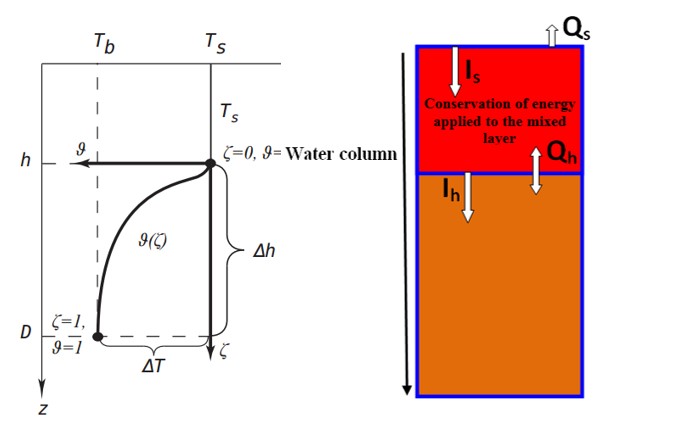
Schematic of a vertical temperature profile in a thermally stratified lake and the corresponding self-similarity coordinates.
List of speakers will be updated soon...


